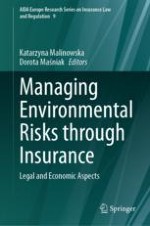2024 | OriginalPaper | Buchkapitel
Liability for Environmental Damage in Outer Space and Its Insurance
verfasst von : Katarzyna Malinowska, Kaja Hopej
Erschienen in: Managing Environmental Risks through Insurance
Verlag: Springer Nature Switzerland
Aktivieren Sie unsere intelligente Suche, um passende Fachinhalte oder Patente zu finden.
Wählen Sie Textabschnitte aus um mit Künstlicher Intelligenz passenden Patente zu finden. powered by
Markieren Sie Textabschnitte, um KI-gestützt weitere passende Inhalte zu finden. powered by
